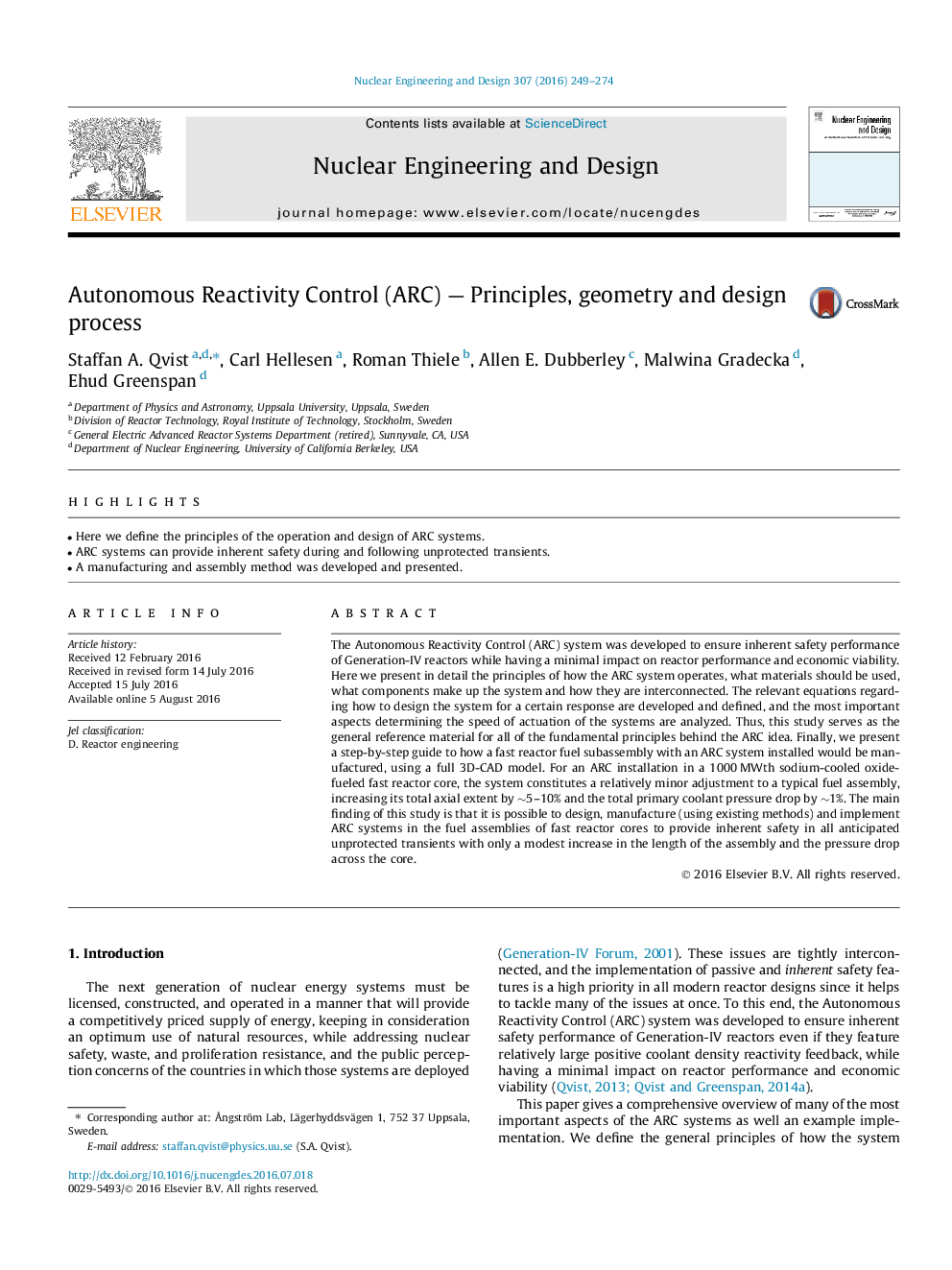| Article ID | Journal | Published Year | Pages | File Type |
|---|---|---|---|---|
| 6759822 | Nuclear Engineering and Design | 2016 | 26 Pages |
Abstract
The Autonomous Reactivity Control (ARC) system was developed to ensure inherent safety performance of Generation-IV reactors while having a minimal impact on reactor performance and economic viability. Here we present in detail the principles of how the ARC system operates, what materials should be used, what components make up the system and how they are interconnected. The relevant equations regarding how to design the system for a certain response are developed and defined, and the most important aspects determining the speed of actuation of the systems are analyzed. Thus, this study serves as the general reference material for all of the fundamental principles behind the ARC idea. Finally, we present a step-by-step guide to how a fast reactor fuel subassembly with an ARC system installed would be manufactured, using a full 3D-CAD model. For an ARC installation in a 1000Â MWth sodium-cooled oxide-fueled fast reactor core, the system constitutes a relatively minor adjustment to a typical fuel assembly, increasing its total axial extent by â¼5-10% and the total primary coolant pressure drop by â¼1%. The main finding of this study is that it is possible to design, manufacture (using existing methods) and implement ARC systems in the fuel assemblies of fast reactor cores to provide inherent safety in all anticipated unprotected transients with only a modest increase in the length of the assembly and the pressure drop across the core.
Related Topics
Physical Sciences and Engineering
Energy
Energy Engineering and Power Technology
Authors
Staffan A. Qvist, Carl Hellesen, Roman Thiele, Allen E. Dubberley, Malwina Gradecka, Ehud Greenspan,
